Mange can affect cats of any age, gender, or breed, but some are more at risk than others. The symptoms of mange can range from a few patches of hair loss to severe itching and bacterial skin infections.
Most cats have no long-lasting effects after a mange infection, but sometimes the hair can take a few months to grow back. If caught early, treatment is usually successful, and the outlook is excellent.
Overview
What is mange?
Mange is a parasitic skin disease caused by tiny mites that live under the surface of the skin and in the hair follicles. These mites are so small that they are not visible to the eye.
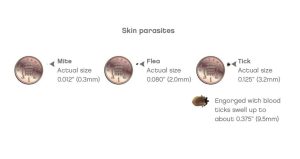
Mange is caused by two different types of mites in cats: sarcoptes and demodex.
Demodex is also known as Demodicosis. It is fairly uncommon in cats.
- It is species-specific, so it does not spread from cats to humans or dogs.
- One form of Demodex can be spread between cats.
- It can affect any age but is most common in young cats and cats with a weakened immune system, such as those with feline immunodeficiency virus or feline leukaemia virus.
Sarcoptes is also known as Scabies. It is also fairly uncommon but highly contagious.
- It can be spread from other animals by direct contact and shared bedding, toys, and grooming equipment.
- It can affect both indoor and outdoor cats. Scabies can spread quickly in stray cat populations.
If left untreated, mange can worsen and lead to a secondary bacterial infection in the skin. Speak to a vet as soon as possible if you are concerned about mange. Our Joii team are available 24 hours a day.
Symptoms
How to tell if your cat has mange
Your cat may develop one or more of the following signs with mange
- Hair loss can be one of the early stages.
- Itching, licking, or biting at the skin. This can range from mild to very severe.
- Red, inflamed, crusty, or scabby skin
- Thickened skin
- Ear infections
- Lip ulcers
- Lethargy
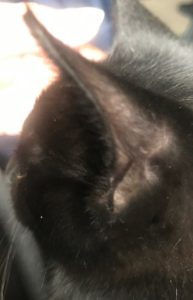
Sarcoptic mange
- Symptoms usually begin around non-haired areas, such as the ears, armpits, and tummy, but can spread all over the body.
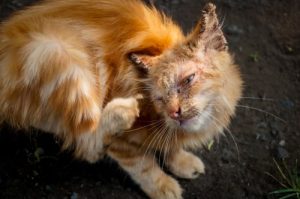
Demodectic mange can be
- Localised: found commonly on the face, head, and neck.
- Generalised: when the lesions appear all over the body.
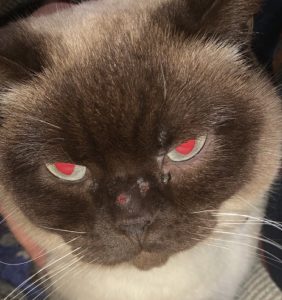
Risk
Are some cats at greater risk of mange than others?
- Cats with weaker immune systems are more at risk. This includes cats that are elderly, very young, or have current health issues such as diabetes, FIV, or FeLV.
- There are some breeds that have been linked to an increased risk of demodex, such as Siamese and Burmese.
Can humans catch mange from cats?
- Sarcoptic mange can spread to other cats, dogs, and even humans. The symptoms in humans are usually very mild, as they cannot live on the skin for very long. The main symptom is itching. We recommend speaking to your GP to discuss whether treatment is needed.
Diagnosis
How is mange in cats diagnosed?
- Your vet will usually diagnose mange based on the way the skin appears and by looking at skin scrapes or tape smears under a microscope.
- They may also be found by a hair pluck sample or skin biopsy.
- Some types of mange can be difficult to diagnose, so your vet may do a medication trial even if the skin scrapes are negative.
Vet treatment
What’s the treatment for mange in cats?
- Medication is used to kill the mites, usually a tablet or spot-on. This is only available as a prescription medication. Over-the-counter products are not effective against mites. Repeated doses for several months may be required.
- Oral antibiotics, shampoos, or creams for any secondary bacterial skin infection.
- Anti-itch or anti-inflammatory medication may also be needed.
- The cost of treating mange varies depending on the circumstances. Sometimes medication to kill the mites is all that is needed. Costs may be higher if there is a secondary skin infection because other medications will be needed.
Your vet might also perform tests to check for underlying health conditions such as feline leukaemia, feline immunodeficiency, kidney disease, hyperthyroidism, and allergic or auto-immune skin conditions.
Home treatment
What to do at home if your cat has mange
One form of demodectic mange can be contagious, so we recommend routinely cleaning all toys, bedding, and collars if your cat has been diagnosed with this. All cats in the household will also need treatment.
The following guidelines apply only to sarcoptic mange, which is highly contagious:
- Isolate your cat from other animals until the mites have cleared.
- Standard household disinfectants are effective against mites. Use these for any surfaces and furniture your cat has been in contact with. The mites do not survive very long in the environment.
- Wash all of their bedding, your bedding, clothes, harnesses, and blankets in a hot wash (50°C or higher).
- Treat all other pets that have been in regular, close contact. The only medication effective against mites is only available on prescription.
Natural remedies and supplements can also be used, alongside prescription medication, to help reduce the symptoms. Supplements containing essential omega oils can help protect the skin barrier. Shampoos or mousses can help soothe and protect the skin.
Speak to our Joii team today to find out more.
Prevention
Tips on how to prevent mange in cats
- Some prescription anti-flea and deworming medications also prevent and treat mites. Your local vet should be able to prescribe this for you.
- Brush your cat regularly and check for any abnormalities in the fur and skin.
- Clean your cat’s bowls, blankets, and collars often.
- Feed your cat good-quality food and make sure they have a healthy weight.
Body Condition Scoring (BCS) in cats
Body Condition Score (BCS) is a scale that gives a practical evaluation of the fat coverage of your cat’s body. By checking how easy or not it is to feel certain bony areas of the body, a score is then produced. There are several scales, from 1 to 5 or 1 to 9. The ideal body condition lies in the middle, so either 3/5 or 5/9.
The body areas normally checked for fat coverage are:
1. ribs and spine
2. hips and shoulders
3. waist
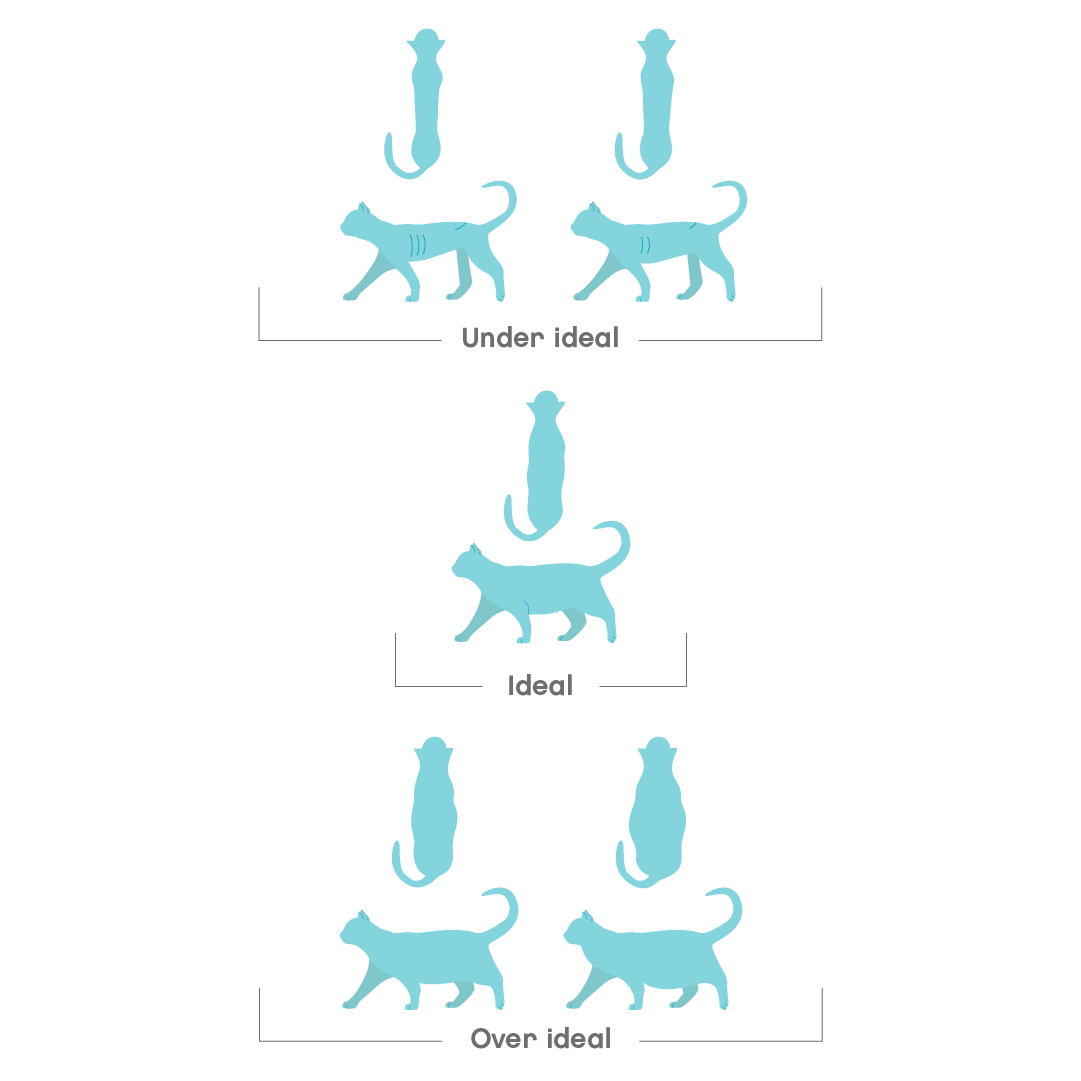
Here are a few tips on how to do it.
With your pet in a standing position:
- Place your hands on the rib cage and gently feel for each rib, without pressing too hard
- Feel the waist and look from the top and the side (if you have a very furry breed, it may be harder to assess)
- Feel the spine, which runs down the middle of the back
- Feel the top of the hips and shoulders
When to worry
What to do if you are worried about mange in cats
Seek help from a vet if:
- Your cat has swollen lymph nodes or is lethargic.
- Your cat’s skin lesions have spread all over their body.
Joii can help if:
- Your cat is itchy or has mild skin problems.
- You have any questions about skin supplements for cats.
- You have any questions about parasite control in cats.
- You have any questions about your cat’s nutrition or weight.
Read our articles to find out other conditions that can make your cat Itchy, or cause Pain or Stress








